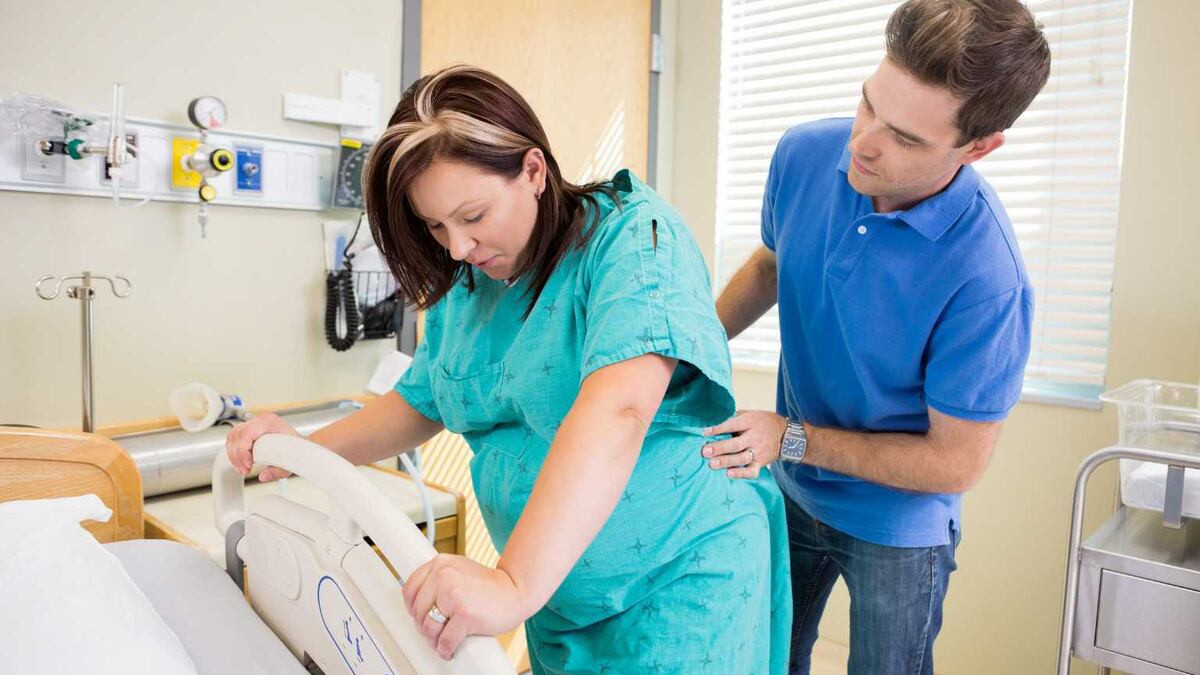Introduction
Understanding the signs of contractions is crucial for expecting mothers as they approach the labor stage. Contractions are the body’s way of preparing for childbirth and can manifest through various symptoms, including lower back pain, pelvic pressure, and rhythmic cramping. While contractions can indicate that labor is imminent, differentiating between true labor and false contractions can be challenging. This article explores the symptoms of contractions, how they are diagnosed, the reasons they occur, and the different types of contractions you might experience.
1.Signs of contractions
Contraction symptoms often start long before you go to the hospital or birth center. In fact, this activity in your uterus is a sign of labor and a strong indication that a baby is about to be born. You may experience a variety of symptoms during labor, but the most common symptoms are as follows. Pain in the lower back that radiates to the front. Pain in the back and upper abdomen, pressure in the pelvis. Cramps that occur in a regular pattern, contractions that last 60 to 90 seconds and get longer. Contractions that come every 5 to 10 minutes and get faster and more intense over time, inability to walk or talk, change position doesn’t relieve pain
2.Diagnosis of contraction
Only your doctor can diagnose the actual pains and determine if you are in labor or not. The following guidelines are used to diagnose contractions. The timing and number of pains are observed. Movement, walking, moving, or the amount of rest may not eliminate true labor contractions, but false contractions often stop when you move, rest, or change position. Strength of contractions: Painful and strong, true labor contractions become progressively stronger. In comparison, false contractions are weaker and milder in intensity. Location of Pain: Back pain is often a sign that you are experiencing true labor contractions. You will feel the contractions start at the back and move towards the front. False contractions persist. If you’re experiencing premature contractions, your doctor may use an external uterine monitoring system to track contractions. During active labor, they may use a fetal monitoring machine to track contractions.
3.Reasons
The most obvious reason for uterine contractions is as your body prepares for childbirth. They are part of early and active labor, but they can also happen when your body is not actively preparing for childbirth. These are called false contractions. They can happen for a variety of reasons, including:
If you are close to your due date or do a lot of things like exercise.
If you are dehydrated, after sex
And finally, premature labor can also cause contractions. These contractions occur before 37 weeks and require immediate medical attention.
4.Types
Contractions are often classified by when they occur during pregnancy and how they feel. There are two types of contractions: true labor contractions and false labor contractions. However, you may experience different stages of contractions under each category.
4.1 Real Labor Contraction
True labor contractions can include premature labor contractions, early labor contractions, and active labor contractions. Premature contractions begin before 37 weeks and may indicate preterm labor. But preterm labor doesn’t automatically mean you’ll have a premature birth. If you’re experiencing symptoms of preterm labor before 37 weeks, talk to your doctor right away. They will determine if your contractions are a sign of active preterm labor.
4.2 Improper Labor Contraction
False labor contractions can occur, typically, during the second and third trimesters. These contractions stimulate the uterus to tighten and loosen, but they are irregular and infrequent and do not last as long as true contractions. These contractions often feel like mild menstrual cramps. This can happen when you are active, if the baby is actively moving, or if there is any pressure on the uterus.
Conclusion
Recognizing and understanding contractions is essential for preparing for labor and delivery. While true labor contractions are a clear sign that childbirth is near, false contractions can occur due to various factors and are not a definitive indicator of labor. If you experience contractions and are uncertain whether they are a sign of true labor, it’s important to consult with your healthcare provider. Monitoring the timing, strength, and location of contractions can help determine their nature and ensure appropriate care during the final stages of pregnancy


Leave feedback about this